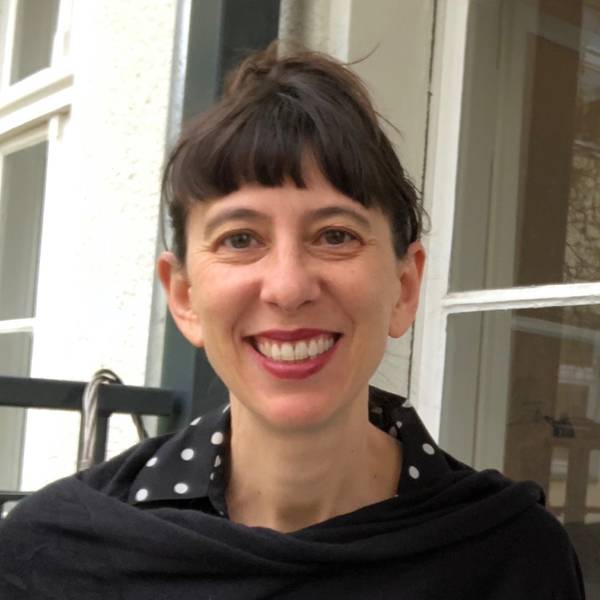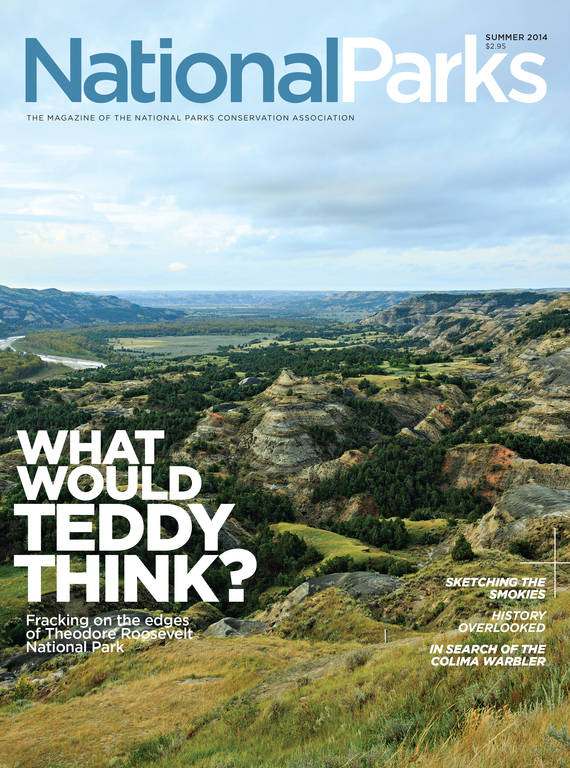Summer 2014
The View from Everywhere
CyArk uses cutting-edge technology to preserve historic sites in virtual reality.
You can’t roam underneath Abraham Lincoln — unfortunately, the public isn’t allowed into the cavernous area below the Lincoln Memorial on the National Mall. But if you could enter the dim, maze-like space, you would find yourself treading on uneven earth under 70-foot ceilings. You’d see massive columns, dark hallways, and 100-year-old graffiti. You’d feel a draft and see stalactites pointing down at you from the underside of those famous stairs that lead to the statue of the 16th president.
The National Park Service doesn’t intend to open access to the monumental basement anytime soon, but the agency wants the public to be able to move through a virtual, three-dimensional representation of it. One day soon, people from around the world will be able to digitally slice through a section of the statue and its yawning basement and study it from every conceivable angle. In an ideal world, students could learn about Lincoln while running through the memorial in an interactive game.
It sounds like a fantasy, but it’s not. In December and April, the California-based nonprofit, CyArk, which is in the business of preserving cultural heritage sites around the world, sent a team of technology whizzes to Washington, D.C., to create a 3D model of the Lincoln Memorial. With cutting-edge laser scanners, the team captured billions of data points which they will turn into everything from precise architectural drawings to video-game-like environments that can be used for a range of interpretation, education, and preservation projects. The Park Service will be able to offer elaborate virtual tours or measure a crack in three dimensions.
“It gives us a perfect record. It’s like DNA,” says Robin Nixon, chief of partnerships at the National Mall and Memorial Parks. “I’m not a technical person but as soon as I saw it, I knew how useful it could be in terms of preservation. If I have my way, we will produce 3D scans of all these memorials and structures on the Mall.”
Though the Park Service provided support staff, the project was carried out and funded by CyArk along with DJS Associates, a Pennsylvania-based forensics firm that donated equipment and their experts’ time. Pulsed lasers generate a cloud of data points, which are then combined with high-definition photography and traditional surveying techniques to create highly accurate models for animations, 3D printing, and 3D immersive environments.
This is not CyArk’s first partnership with the Park Service: The organization has also worked at more than 20 park sites from Mount Rushmore National Memorial in South Dakota to Manzanar National Historic Site in California, and San Antonio Missions National Historical Park in Texas. At Manzanar, one of the war relocation centers where Japanese Americans were interned during WWII, a team was able to re-create buildings that no longer exist by surveying foundations and using old photographs. With the Rushmore data, it’s possible to look down at the statue from atop the presidents’ heads or to virtually walk through the Hall of Records, which is closed to the public. At www.cyark.org, where all the finished work is archived, visitors can download a free app to view the 3D images of Mount Rushmore or find lesson plans built around the digital material. (One group of young students figured out how many first graders could fit in George Washington’s nose.)
These projects are critical because natural disasters, population growth, war, terrorism, and the ravages of time are affecting heritage sites around the world, says Ben Kacyra, who co-founded CyArk with his wife, Barbara.
“We’re not only losing the sites themselves, but we’re losing the stories they tell, which to me is even more important,” he says. “These sites and these stories represent a very significant portion of our human collective memory. Imagine losing your memory. How do you know who you are when you don’t know where you’ve come from?”

National Parks
You can read this and other stories about history, nature, culture, art, conservation, travel, science and more in National Parks magazine. Your tax-deductible membership donation of $25 or more entitles…
See more ›People in the field often describe Kacyra as the father of 3D laser scanning because his company, Cyra Technologies, made significant improvements to the scanning equipment and brought the first portable models to the market. Kacyra, who was born in Northern Iraq, was deeply affected by the childhood experience of visiting ruins on the outskirts of his town with his father, who would tell him stories of the ancient Assyrian Empire. The treasures at those sites were on his mind in 2001, when the Taliban destroyed the 1,600-year-old Bamiyan Buddhas in Afghanistan. “In an instant, they were gone and there was no detailed documentation,” he says. “That’s really when I thought, ‘We have to do something.’”
By then, Kacyra’s technology company had been acquired, and he had founded a family foundation which provided Cyark with seed money for a trial project at Pompeii. The nonprofit, which now relies on funding from foundations, individuals, and corporations, has since documented more than 120 sites. Kacyra’s dream is to digitally preserve 500 sites by 2018.
It’s an astonishing trove, but even Kacyra says that virtual visits can never compare with standing inches away from a 3,000-year-old statue or gazing up at a massive memorial.
“The visceral experience is priceless,” he says. “But how many people outside the United States can visit Mount Rushmore? How many people in Japan can see the internment camps? And how long will those sites last? We can give people the next best thing.”
About the author
-
 Rona Marech Editor-in-Chief
Rona Marech Editor-in-ChiefRona Marech is the editor-in-chief of National Parks, NPCA’s award-winning magazine. Formerly a staff writer at the Baltimore Sun and the San Francisco Chronicle, Rona joined NPCA in 2013.



